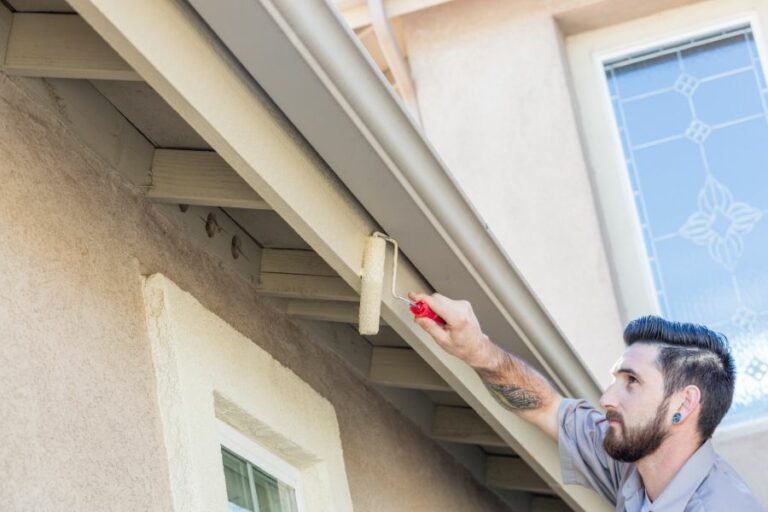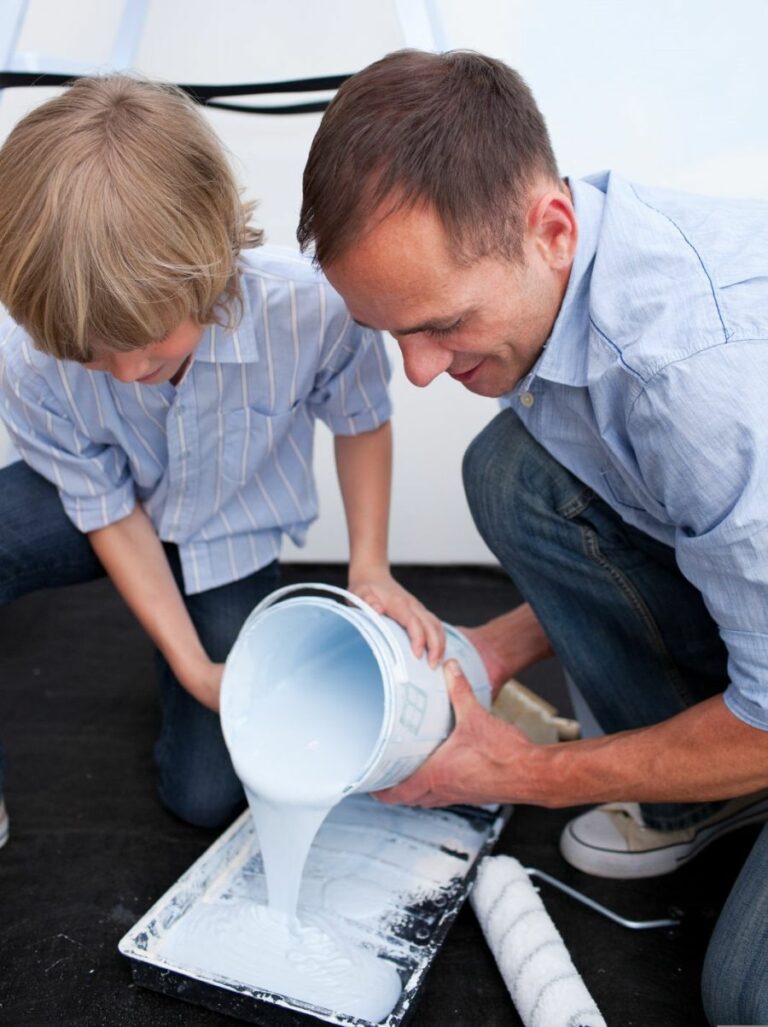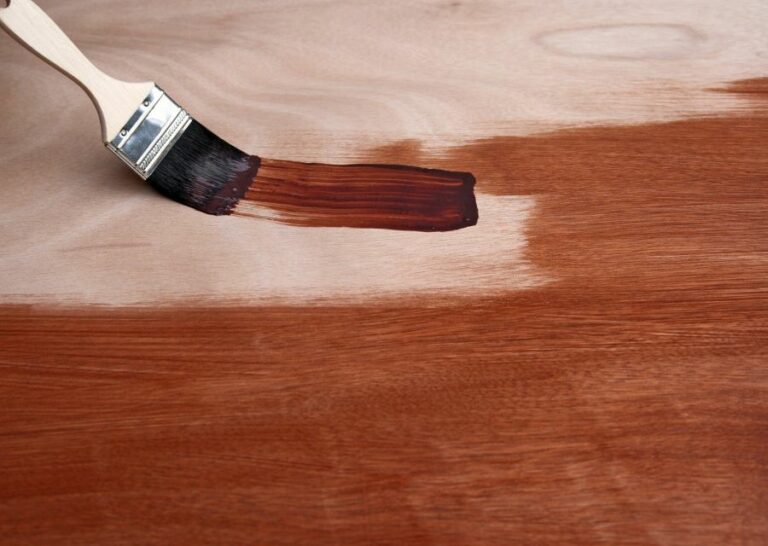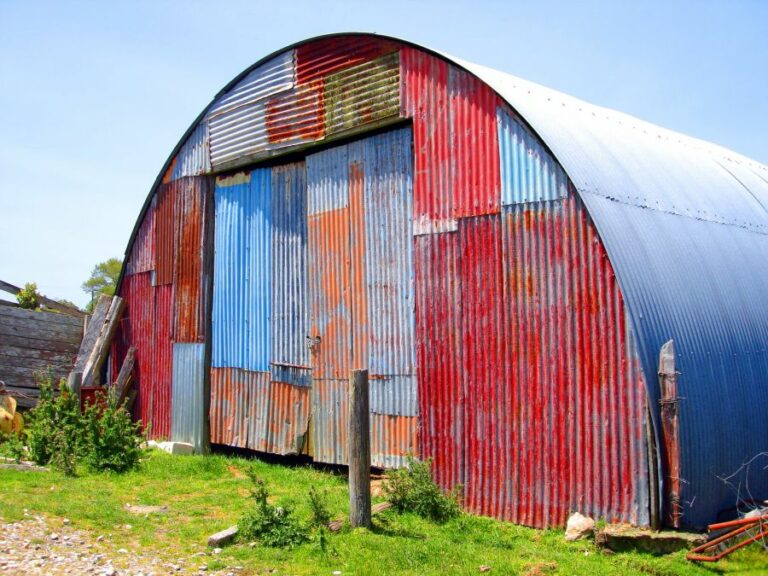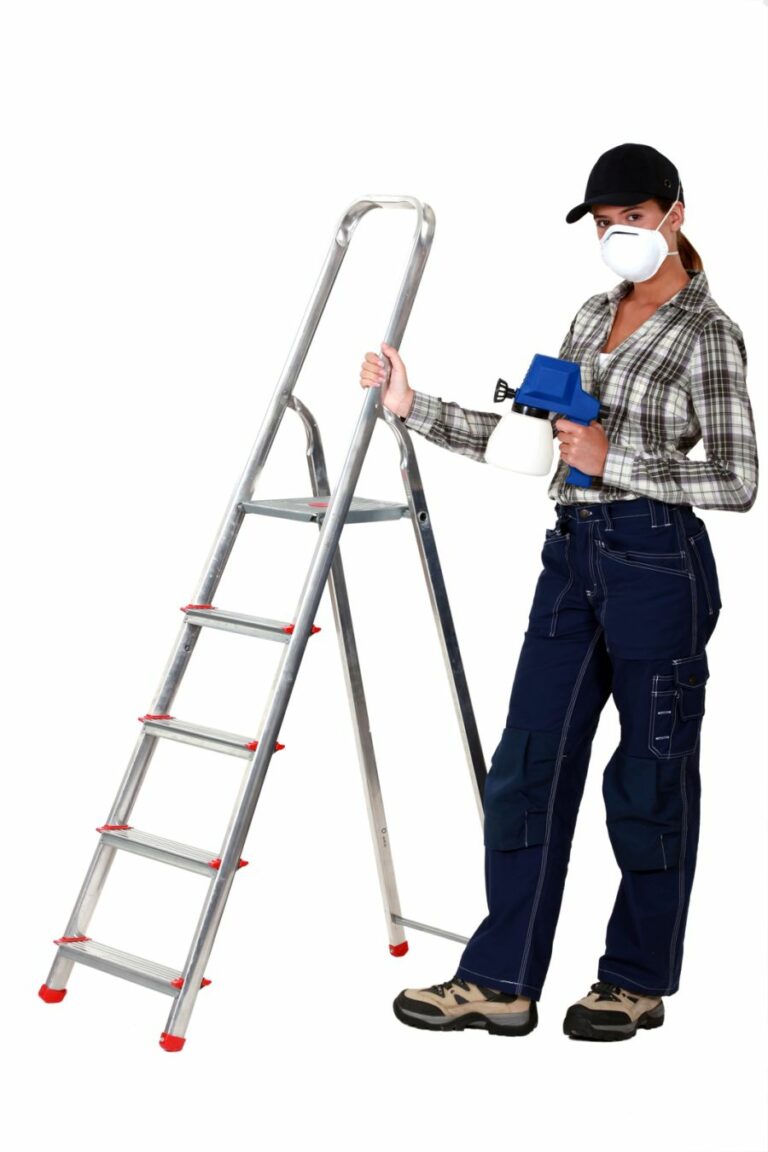Mold-Resistant Outdoor Paint, 25 Things You Should Know
Are you tired of constantly battling mold and mildew on your outdoor surfaces? If you’re looking for a long-lasting solution, you’ve come to the right place. We have just the right information and tips to help you find the perfect mold-resistant outdoor paint for your needs. Not only will it keep your exteriors mold-free, but it also ensures that they look fresh and neat for an extended period.
Mold-resistant outdoor paint:>
Mold-resistant outdoor paint is specially formulated to prevent mold, mildew, and fungi growth on exterior surfaces, protecting homes from moisture damage and potential health risks. Available in acrylic, alkyd, and elastomeric types, these paints often include antimicrobial additives, water resistance, UV resistance, and breathability for optimal protection. Proper application, including surface preparation and using a mold-resistant primer, is essential for effective results.

Tired of seeing mold ruining your outdoor paint? Fret not! We have the perfect solution with mold-resistant outdoor paint. Continue reading to discover the benefits, top brands, and application tips that will keep your exteriors looking fresh and mold-free. Say goodbye to unsightly mold!
Contents
- 1 Mold-Resistant Exterior Paint for Outdoor Surfaces
- 2 Is there an exterior paint available that is resistant to mold growth?
- 3 What is the Top-performing Exterior Paint with Mold Resistance?
- 4 Which Exterior Paint Options Resist Mold Growth?
- 5 Is Mold Resistant Paint Truly Effective in Preventing Mold Growth?
Mold-Resistant Exterior Paint for Outdoor Surfaces
Mold-resistant outdoor paint is a must-have for homeowners who want to protect their homes from mold and moisture damage. This type of paint is specially formulated to resist the growth of mold, mildew, and other fungi that can cause unsightly stains, odors, and structural damage.
• Why Mold Resistant Paint Matters
Mold is a type of fungus that grows in damp environments, and it can be found both indoors and outdoors. Exposure to mold can lead to health problems in some individuals, including allergies and respiratory issues.
Moreover, mold can cause unsightly stains on surfaces and even weaken the structural integrity of materials.
To prevent mold from taking hold on the exterior of your home, it’s essential to choose mold-resistant outdoor paint. Such paint can act as a barrier to mold growth, ultimately protecting your home from costly repairs or renovations down the line.
• Types of Mold Resistant Outdoor Paint
When choosing mold-resistant outdoor paint, it’s important to consider the type of paint best suited for your specific needs. There are different categories of mold-resistant paints available on the market, including:
– Acrylic Paints
Acrylic paints are water-based and tend to be the most popular choice for outdoor projects. These paints are UV-resistant and dry quickly, making them an excellent option for exterior surfaces exposed to the elements.
Additionally, acrylic paints are less prone to cracking and peeling compared to other types of paint.
– Alkyd Paints
Alkyd paints are oil-based and offer exceptional adhesion and durability. Although they tend to take longer to dry, alkyd paints provide a durable finish that can resist mold growth. Alkyd paints are best suited for surfaces where moisture is a significant concern, such as in coastal regions.
– Elastomeric Paints
Elastomeric paints are a type of high-performance acrylic paint designed to provide a flexible, waterproof coating for exterior surfaces. These paints expand and contract with temperature changes, preventing cracks from forming and offering excellent mold protection.
Elastomeric paints are an excellent choice for surfaces with existing minor cracks or for those prone to cracking due to frequent temperature changes.
• Key Features to Look for in Mold Resistant Outdoor Paint
When selecting mold-resistant outdoor paint, there are several features to consider, including:
- Antimicrobial additives: Many mold-resistant paints include antimicrobial additives that inhibit mold and mildew growth. Look for paints that contain these additives for optimal protection.
- Water resistance: Choose a paint that offers water resistance, as moisture is a significant factor in mold growth. Water-resistant paints will prevent water from penetrating the surface, reducing the likelihood of mold formation.
- UV resistance: UV rays can break down paint over time, causing it to peel, crack, or fade. Select a paint that offers UV resistance to ensure your paint job stays fresh and maintains its mold resistance properties.
- Breathability: A breathable paint allows moisture trapped within the surface to escape while preventing new moisture from entering. This helps keep surfaces dry and less prone to mold growth.
• How to Apply Mold Resistant Outdoor Paint
Proper application is crucial to ensure the effectiveness of mold-resistant outdoor paint. Follow these steps for the best results:
- Prepare the surface: Thoroughly clean the surface by removing any dirt, debris, and loose or peeling paint. Use a pressure washer or a scrub brush and a mild detergent for best results. Allow the surface to dry completely before proceeding.
- Treat existing mold: If any mold is present on the surface, treat it with a mold-killing solution, such as a bleach-based cleaner or a commercial mold remover. Rinse the surface thoroughly and allow it to dry before painting.
- Prime the surface: Apply a mold-resistant primer to the surface, which will enhance the paint’s adhesion and provide additional protection against mold growth. Allow the primer to dry according to the manufacturer’s instructions.
- Apply the paint: Use a high-quality paintbrush or roller to apply the mold-resistant outdoor paint according to the manufacturer’s instructions. Be sure to apply an even, consistent coat to ensure optimal protection.
- Allow the paint to dry: Follow the manufacturer’s instructions for drying time before applying additional coats, if necessary. Once the paint has dried completely, your home’s exterior will be protected from mold and moisture damage.
• In Summary
Mold-resistant outdoor paint is essential for homeowners who want to protect their homes from the damaging effects of mold and moisture.
By carefully selecting the right type of paint and properly preparing and applying it, you can safeguard your home’s exterior and maintain its appearance and structural integrity for years to come.
For more information on mold prevention and remediation, visit the U.S. Environmental Protection Agency’s website at www.epa.gov.
Is there an exterior paint available that is resistant to mold growth?
Mold-resistant exterior paint plays a crucial role in protecting the outer walls of buildings from mold growth.
Mold, a type of fungi, can cause significant damage to the structure, appearance, and health of a building. It thrives in damp and humid conditions, thus making the exterior walls highly susceptible to its growth.
• What is Mold Resistant Exterior Paint?
Mold-resistant paint is specially formulated with added antimicrobial properties to inhibit mold growth on the surface where it is applied. These paints usually contain mildewcides, which are chemical compounds that act against mold and mildew.
They work by disrupting the life cycle of mold spores, preventing them from multiplying and taking hold on your exterior walls.
• The Perks of Using Mold Resistant Exterior Paint
– Protection from Mold Growth
The primary benefit of using mold-resistant exterior paint is the protection it offers against mold growth. By inhibiting the growth of mold, these paints help extend the longevity of the painted surface while maintaining its aesthetic appearance.
– Health Benefits
Mold growth can lead to several health issues, such as allergies, respiratory complications, and skin irritations. By using mold-resistant paint on the exterior of your building, you’re safeguarding not only the structure but also the well-being of the people inside.
– Low Maintenance
Mold-resistant paints tend to require less frequent repainting compared to regular paints because of their durability and resistance to mold. This saves time, effort, and money in maintaining your property.
• Choosing the Right Mold Resistant Exterior Paint
The key to ensuring the effectiveness of mold-resistant paint is selecting the right product and application. Here are a few factors to consider:
– Quality and Ingredients
Opt for high-quality exterior paints with added antimicrobials such as mildewcides. Look for a paint with a higher concentration of these active ingredients to ensure the paint’s longevity and effectiveness.
– Breathability
It’s essential to choose a paint that allows water vapor to pass through instead of trapping it inside. This prevents moisture buildup, which can lead to mold growth. When shopping for mold-resistant paint, look for terms such as “breathable” or “water vapor permeable.”
– Application
Ensure that the surface is adequately prepared before applying mold-resistant paint. This may involve cleaning, removing existing mold, and fixing any existing moisture problems. Follow the manufacturer’s instructions on the correct application method and number of coats needed to achieve optimal results.
– Climate
Mold growth is prevalent in warm, humid climates. Keep this in mind when choosing mold-resistant paint, as some products may be better suited to specific climates. Consult with experts or professionals at your local paint store for recommendations tailored to your location.
• Top Recommendations for Mold Resistant Exterior Paints
Based on experience and research, here are some top mold-resistant exterior paint recommendations:
- Zinsser Perma-White Mold & Mildew-Proof Exterior Paint: This paint offers a long-lasting mold and mildew-proof finish that works well in extreme humidity and damp conditions.
- Benjamin Moore Aura Exterior Paint: This high-quality paint provides excellent durability and mold resistance, making it an excellent choice for any climate.
- Sherwin-Williams Duration: This line of paint is well-known for its mold and mildew resistance, as well as UV protection, giving it a top choice for any exterior painting project.
- BEHR Premium Plus Ultra Exterior Paint & Primer in One: This paint and primer combo offers excellent coverage, durability, and mold resistance, making it a great all-in-one solution for your exterior painting needs.
It’s important to note that no paint can guarantee complete mold prevention. Proper maintenance, ventilation, and promptly addressing any moisture issues are crucial steps in maintaining a mold-free exterior.
• Additional Resources
For more information on mold-resistant exterior paints and the best practices for preventing mold growth, consider visiting the U.S. Environmental Protection Agency (EPA).
In conclusion, using mold-resistant exterior paint is an essential part of maintaining your property’s walls and protecting it from the damaging effects of mold growth.
By choosing the right paint and following proper application techniques, you can effectively minimize mold risks while keeping your building’s exterior looking fresh and vibrant for years to come.
What is the Top-performing Exterior Paint with Mold Resistance?
Mold-resistant paint is an essential solution for any homeowner looking to keep their exterior walls safe and mold-free. Mold is not only unsightly but also harmful to our health, leading to respiratory issues and allergies.
Luckily, mold-resistant paint can greatly reduce the chances of mold growth on the walls of your home. In this comprehensive guide, we will explore the best exterior mold-resistant paint available in the market.
• The Importance of Mold Resistance in Exterior Paint
Before diving into the particulars of specific mold-resistant paint options, it’s crucial to understand why mold resistance is a necessary feature in any exterior paint product. Mold thrives in damp, humid environments, which are often found outside of homes.
When mold grows on the walls and surfaces of your home, it weakens the structure and reduces the longevity of your paint job.
Moreover, mold can lead to various health issues, as mentioned earlier. This is particularly true for individuals with asthma, allergies, or compromised immune systems.
By using mold-resistant paint on your home’s exterior, you’ll be providing an additional layer of protection against potential health hazards.
• Factors to Consider When Choosing Mold-Resistant Paint
When deciding on the best mold-resistant paint for your home’s exterior, consider the following factors:
– Quality and Durability
The primary factor to look for in mold-resistant paint is its quality and durability. Select paints that can withstand harsh weather conditions without chipping or fading. Additionally, consider the lifespan of the paint, as it should ideally last several years without requiring frequent touch-ups.
– Coverage
The best mold-resistant paint should offer full coverage on various surfaces, such as wood, concrete, and stucco. Make sure that the paint can fully cover potential problem areas without leaving gaps or streaks.
– Ease of Application
Choose a mold-resistant paint that is easy-to-apply so that you can get the job done quickly and effectively. It should be suitable for both professional and DIY painting projects.
– Environmentally Friendly
Opt for an eco-friendly paint that reduces harmful emissions and does not contain toxic substances such as volatile organic compounds (VOCs).
• Top Mold Resistant Paint Options
Based on the factors mentioned above, we recommend the following mold-resistant paint options for your home’s exterior:
1. Behr Premium Plus Ultra Exterior Paint and Primer in One
This paint from Behr offers a paint and primer combo that is both durable and mold resistant. Its advanced formula creates a tough barrier against water, mildew, and dirt, ensuring your home’s exterior stays protected for years to come.
With its excellent coverage and resistance to fading, this paint is a top choice for tackling mold growth on your home’s exterior. (Behr.com)
2. Sherwin-Williams Duration Exterior Acrylic Coating
The Duration Exterior Acrylic Coating from Sherwin-Williams is a high-quality mold-resistant paint that provides long-lasting protection for your home.
This paint is infused with PermaLast technology, which offers excellent durability and coverage. Moreover, its self-priming feature often eliminates the need for an additional primer coat. (Sherwin-Williams.com)
3. Benjamin Moore Aura Exterior Paint
Aura Exterior Paint from Benjamin Moore boasts remarkable durability and excellent mold resistance. This paint features a unique Color Lock technology that ensures long-lasting color retention, and its low-VOC formula makes it an environmentally friendly option.
Additionally, the paint’s exceptional coverage and adhesion qualities make it ideal for various exterior surfaces. (BenjaminMoore.com)
4. Zinsser Perma-White Exterior Paint
Zinsser’s Perma-White Exterior Paint is a water-based, mold-resistant paint with a 15-year guarantee. The paint creates a protective layer that prevents mold and mildew growth on your home’s exterior surfaces.
Additionally, its outstanding adhesion, durability, and full coverage make it a perfect choice for any exterior surface, be it wood, concrete, or stucco. (RustOleum.com/Zinsser)
• Proper Surface Preparation and Application
To achieve the best results with mold-resistant paint, it’s crucial to follow proper surface preparation and application techniques. Before applying the paint, ensure that the surface is clean, dry, and free from any mold or mildew. Use a mold-cleaning solution or power-wash the surface if necessary.
Next, follow the manufacturer’s guidelines for applying the paint. In general, apply at least two coats of mold-resistant paint to ensure adequate coverage and protection.
For more detailed information on preventing mold growth on your home’s exterior surfaces, visit the Environmental Protection Agency’s website.
• Conclusion
Investing in the best mold-resistant paint for your home’s exterior is a wise long-term decision that will protect your home’s structure and your family’s health.
By considering factors such as quality, durability, coverage, and eco-friendliness, we recommend selecting from our top mold-resistant paint options. Proper surface preparation and application will ensure your home stays mold-free and looks pristine for years to come.
Which Exterior Paint Options Resist Mold Growth?
When it comes to painting your home’s exterior, it is crucial to select a paint that isn’t just visually appealing but also practically beneficial. A critical concern when it comes to exterior home paint is the presence of mold.
Mold growth on your home’s exterior not only affects the appearance but can lead to structural damage when left unchecked.
• The Importance of Mold-Resistant Paint
Mold growth in your home can cause paint discoloration, create unpleasant odors, and potentially lead to health problems. Mold spores are naturally present in the air, meaning that any exterior surface is vulnerable to mold growth, primarily if it remains damp or doesn’t receive enough sunlight.
It’s essential to choose mold-resistant paint to minimize the risk of mold growth and protect the integrity and appearance of your home.
• Assessing Your Home’s Exterior for Mold Risk
Before delving into the different types of mold-resistant paint, it’s essential to evaluate your home’s exterior for any specific issues that may contribute to mold growth.
These may include standing water near your home, overhanging trees creating shade or moisture, poorly ventilated soffits, or high humidity levels. If any of these issues are present, it’s essential to address them alongside choosing a mold-resistant paint to achieve the best protection against mold.
• Acrylic Paints: A Durable and Mold-Resistant Option
One of the most popular and effective mold-resistant paint options on the market is acrylic paint. Acrylic paints are water-based, which means they are less likely to trap moisture and encourage mold growth than oil-based paints.
They also dry quickly, reducing the chance of moisture being trapped beneath the paint layer.
Acrylic paints create a hard, non-porous, and water-resistant surface that protects your home’s exterior from moisture and subsequent mold growth. Additionally, acrylic paints offer excellent adhesion, ensuring that the paint won’t peel or crack over time, further protecting against mold growth.
– Mildewcide Additives: Enhancing Mold Resistance
To further enhance the mold resistance of your chosen paint, consider using a mildewcide additive. These additives can be mixed into your acrylic paint, providing an additional layer of protection against mold growth.
Some paint manufacturers offer premixed products containing mildewcide, but it is also possible to purchase additives separately for more control over the concentration.
It’s important to note that mildewcide additives are not a replacement for proper surface preparation and other preventative measures. Be sure to clean and prep your home’s exterior thoroughly, removing any existing mold or mildew, before applying your chosen mold-resistant paint.
• Low VOC Paints: Minimizing Mold Growth and Indoor Air Quality Concerns
An additional factor to consider when selecting mold-resistant paint is the paint’s VOC (volatile organic compound) content. High-VOC paints can release harmful chemicals into the air, which can contribute to indoor air quality concerns and increase the likelihood of mold growth.
Low VOC paints, on the other hand, are far safer for both the environment and your home’s air quality. These paints also possess superior mold resistance qualities, making them an ideal choice for your exterior painting project.
When choosing low-VOC paint, be sure to select a product that is both low in VOC content and specifically designed for exterior use. The United States Environmental Protection Agency has strict guidelines for low VOC paint classification, ensuring their safety and effectiveness.
• In Conclusion: Mold-Resistant Paint Protects Your Home’s Exterior
By selecting the right exterior paint, not only will you enhance your home’s appearance, but you’ll also save time and money by preventing mold growth. High-quality acrylic paint, combined with mildewcide additives and low VOC content, offers the best combination of appearance and practical benefits.
Remember to evaluate your home’s exterior for mold risk factors and take proactive steps to address them. By doing so, you’ll maximize the effectiveness of your mold-resistant paint and protect your home’s exterior for years to come.
Is Mold Resistant Paint Truly Effective in Preventing Mold Growth?
Mold and mildew are unsightly problems that can cause structural damage and present potential health hazards for those living or working within the affected building. Using mold-resistant paint has emerged as a popular solution to prevent the growth of mold and mildew.
• Understanding Mold Resistant Paint
Mold-resistant paint is specifically designed to inhibit the growth of molds and other fungi on various surfaces. This type of paint contains antimicrobial additives, most commonly zinc oxide, which deters the growth of mold spores.
Mold-resistant paint is often used in damp areas of the home, such as bathrooms, basements, and laundry rooms, where moisture levels can create a breeding ground for mold and mildew.
– Advantages of Mold Resistant Paint
There are several benefits to using mold-resistant paint, including the following:
- Health Benefits: Mold growth can lead to various health problems, such as allergies, asthma, and other respiratory conditions. Using mold-resistant paint can minimize the risk of these health problems by preventing mold growth.
- Aesthetic Appeal: Mold and mildew can detract from the appearance of a surface, causing it to look unclean and unsightly. Mold-resistant paint can help maintain the desired appearance of your interiors for more extended periods without requiring frequent maintenance.
- Long-lasting Protection: Most mold-resistant paints offer extended protection against mold growth, with some even guaranteeing up to 5 or 10 years.
- Versatility: Mold-resistant paints come in various finishes such as matte, satin, and semi-gloss, allowing you to choose a finish that complements your existing decor.
– Limitations of Mold Resistant Paint
Though mold-resistant paint offers multiple benefits, it is essential to recognize its limitations:
- Not a Complete Solution: Mold-resistant paint does not eliminate existing mold or mildew. It is crucial to clean and treat the affected area before applying mold-resistant paint.
- Not Foolproof: Mold-resistant paint is not foolproof, and mold growth may still occur if the underlying cause of moisture is not addressed. It is essential to control humidity levels and fix any leaks or sources of moisture in the building.
- Cost: Mold-resistant paint is typically more expensive than regular paint, increasing the overall cost of the project.
• Expert Tips for Using Mold Resistant Paint Effectively
For optimal results, follow these expert tips when using mold-resistant paint:
- Clean and Treat Affected Areas: Before applying mold-resistant paint, thoroughly clean and treat any surfaces affected by mold or mildew. A solution of bleach and water can be used to clean the area, followed by the application of a mold-killing primer.
- Address Underlying Moisture Issues: Fix any leaks, cracks, or sources of moisture in the building. Properly ventilate damp areas to reduce humidity levels and ensure that water does not accumulate on surfaces.
- Choose a High-Quality Paint: Invest in high-quality mold-resistant paint with a proven track record for effectiveness. It is always recommended to check customer reviews and expert recommendations to ensure that you make an informed decision.
- Apply Multiple Coats: To get the most out of your mold-resistant paint, apply multiple coats as per the manufacturer’s instructions to ensure maximum protection against mold and mildew growth.
- Maintain Regular Inspections: Regularly inspect areas where mold growth is likely to occur, such as basements, bathrooms, and laundry rooms. This will enable you to spot and address any issues before they escalate.
- Follow Up with Maintenance: Depending on the manufacturer’s warranty, you may need to apply a new coat of mold-resistant paint periodically to maintain its effectiveness. Keep an eye on any signs of wear and tear and follow up accordingly.
– Additional Resources
For further guidance on preventing and treating mold growth, it is essential to consult reputable sources. The US Environmental Protection Agency (EPA) offers a wealth of information and resources on managing mold and moisture problems in residential and commercial buildings.
• Conclusion
Mold-resistant paint can indeed offer a reliable defense against mold and mildew growth when used correctly. However, it is essential to understand that it is not a complete solution to mold problems. Addressing underlying causes of moisture, thorough cleaning, and regular maintenance are key factors to prevent and manage mold growth effectively in the long run.
As an expert, I recommend investing in quality mold-resistant paint and following the tips discussed in this article to maximize its effectiveness.

